Tiny Home, Big Style: Entryway-Living-Kitchen Combo
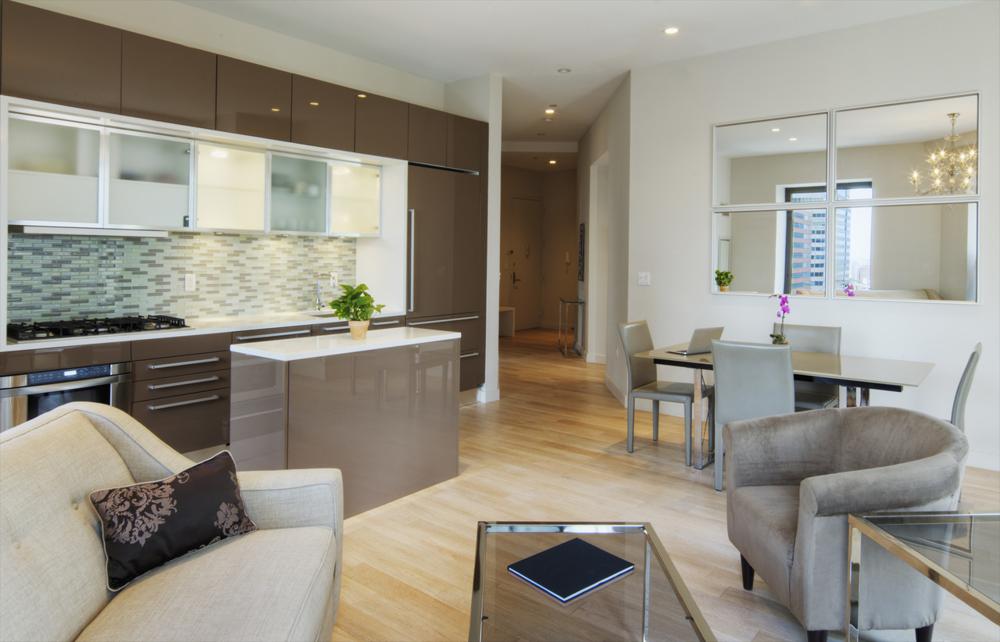
Tiny Home, Big Style: Entryway-Living-Kitchen Combo
The allure of tiny homes is undeniable. They offer a simplified lifestyle, a smaller footprint, and often, a lower cost of living. But what about interior design in these compact spaces? How can you create a sense of openness and flow when your entryway, living room, and kitchen are all one?
This is where the entryway-living-kitchen combo comes into play. While it may seem like a space-saving necessity, this design choice presents an exciting opportunity to create a stylish and functional haven that maximizes every inch.
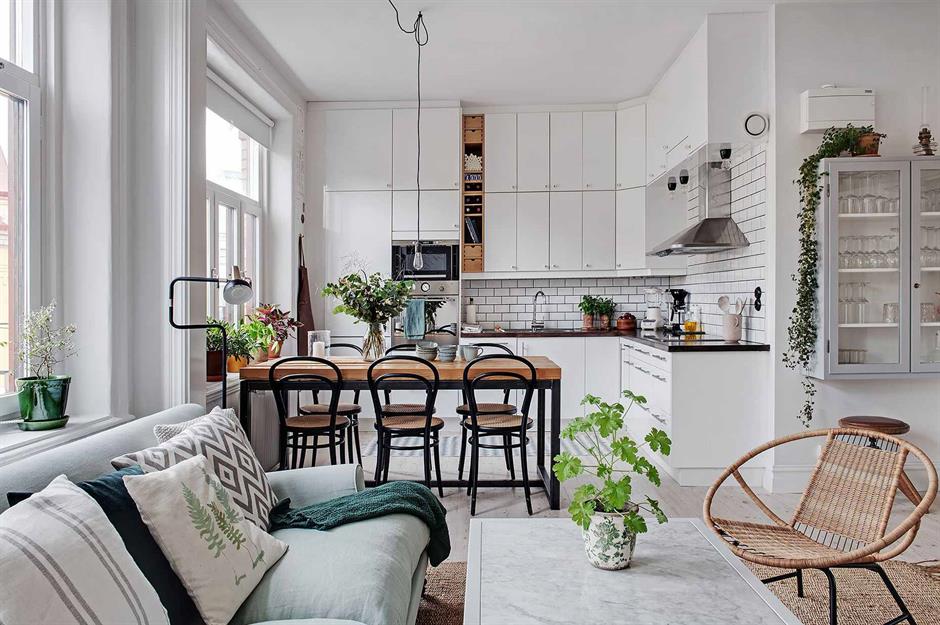
The Challenge: Balancing Function and Style
The biggest hurdle in designing an entryway-living-kitchen combo is striking the right balance between functionality and style. You need to create a space that feels welcoming and inviting while also accommodating the practical needs of each distinct area.
Here's a breakdown of the challenges and solutions:
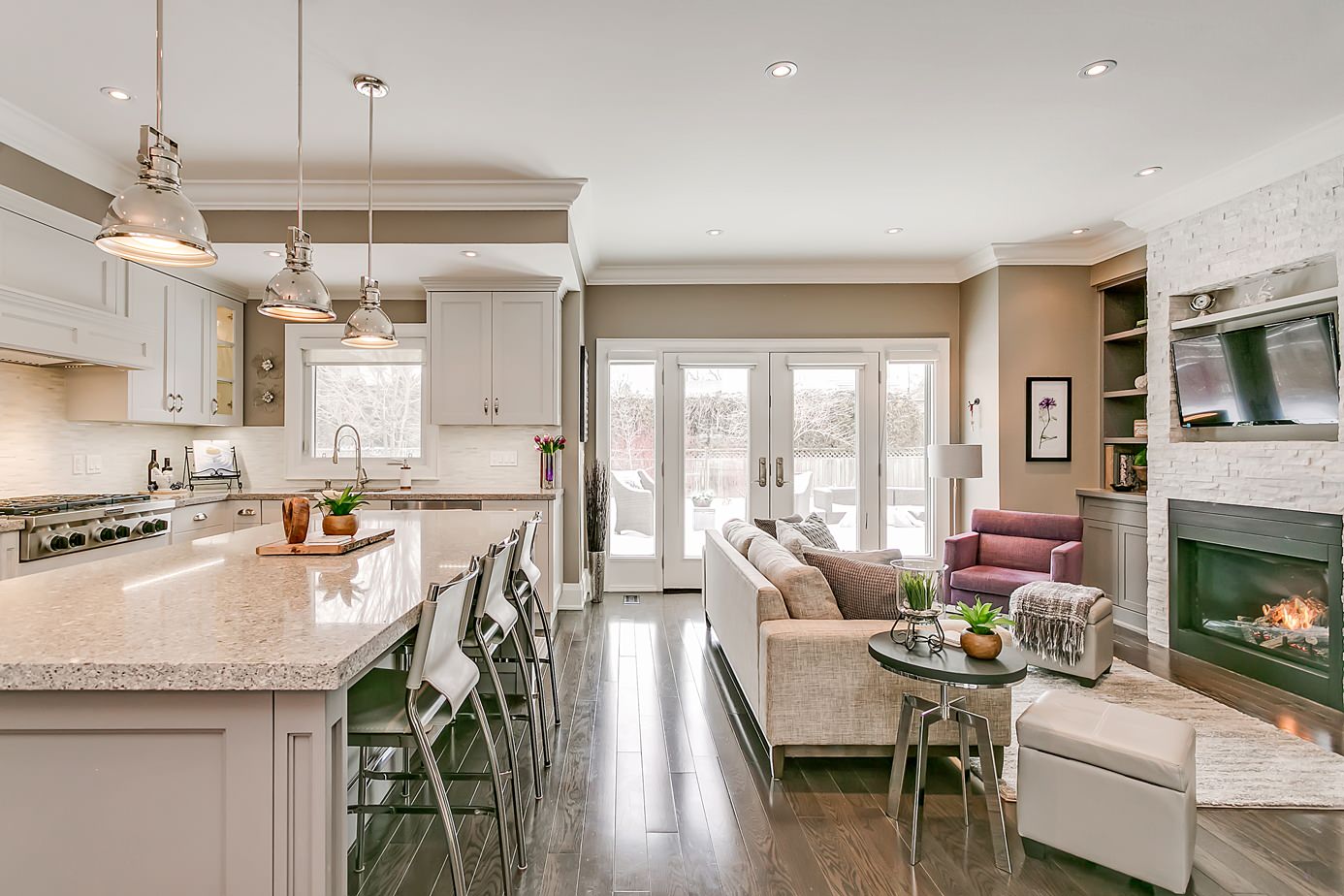
1. Defining Zones:
- Entryway: This is the first impression of your home, so it's crucial to make it inviting. However, it also needs to be functional, serving as a place to shed coats, store shoes, and receive guests.
- Living Room: This is the heart of the home, a place to relax, entertain, and connect. It needs to be comfortable and visually appealing, but also accommodate furniture for lounging and hosting.
- Kitchen: A kitchen needs to be efficient and functional. This space should be well-organized with adequate storage and counter space for meal preparation and cleanup.
2. Maximizing Space:
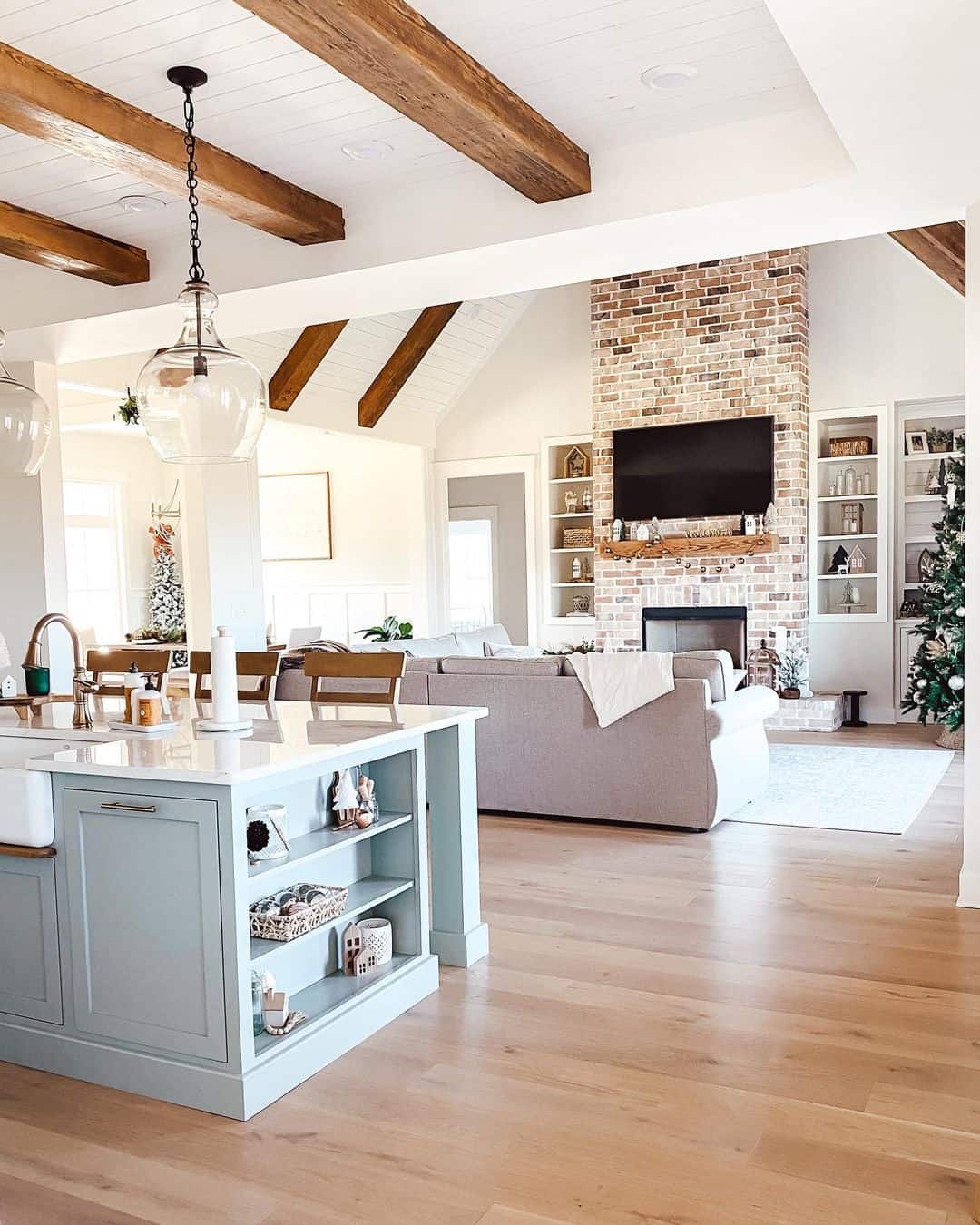
- Open Floor Plan: This is the key to creating a sense of openness in a small space. Eliminate any unnecessary walls or partitions, letting the eye travel seamlessly through the entire area.
- Multifunctional Furniture: Furniture that serves multiple purposes is essential for a tiny home. Look for pieces like a sofa bed, a coffee table with storage, or a wall-mounted TV cabinet that doubles as a bookshelf.
- Vertical Storage: Utilize every inch of vertical space! Shelves, cabinets, and wall organizers are invaluable for keeping belongings tidy and out of sight.
3. Creating Visual Interest:
- Color and Texture: Using different shades of color and varied textures can visually separate each zone without resorting to walls. For example, a lighter shade of paint for the living room and a darker shade for the kitchen can create a subtle distinction.
- Lighting: Use strategically placed lighting fixtures to highlight key features and add depth to the space. Recessed lighting can create a sense of openness, while task lighting in the kitchen can enhance functionality.
- Decorative Accents: Adding throw pillows, artwork, plants, and decorative objects can instantly personalize the space and create focal points, drawing attention to certain areas and defining specific zones.
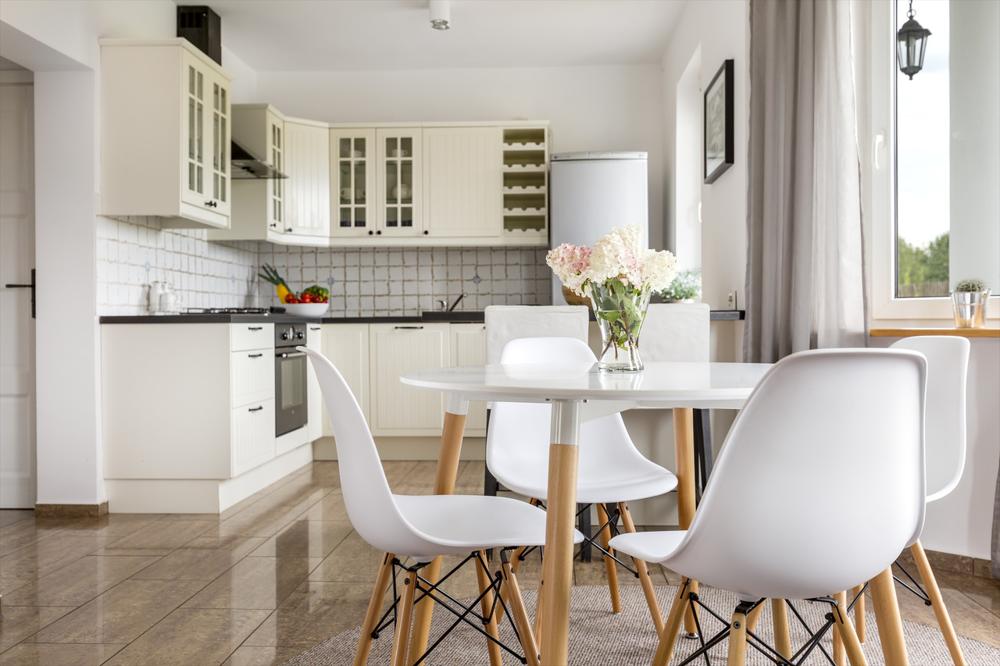
Designing the Entryway-Living-Kitchen Combo
Now let's dive into the details of designing each zone within the entryway-living-kitchen combo:
A. Entryway:

- Visual Appeal: The first impression is crucial! A welcoming entryway sets the tone for the rest of the home.
- Entryway Console: A console table, positioned strategically near the entryway, offers a perfect spot for keys, mail, and decorative accents.
- Mirror: A mirror positioned opposite the entryway door can instantly make the space feel larger and brighter.
- Coat Hooks: Wall-mounted coat hooks can be a space-saving alternative to a bulky coat rack.
- Functionality: An efficient entryway keeps clutter at bay.
- Shoe Storage: A shoe rack or storage bench can organize footwear neatly and out of sight.
- Storage Bins: Stylish baskets or storage bins can be placed under the console table or on shelves to hold items like gloves, scarves, and hats.
B. Living Room:
- Comfortable Seating: A cozy living room is essential for relaxation and socializing.
- Sofa: A comfortable sofa serves as the centerpiece of the living room. Choose a size that fits the space well, considering both seating capacity and overall comfort.
- Accent Chairs: Add one or two accent chairs to provide additional seating, break up the monotony, and bring a touch of visual interest.
- Ottomans: Multifunctional ottomans can serve as extra seating, footrests, or even coffee table surfaces.
- Entertainment Center: A living room needs a focal point for entertainment and visual interest.
- TV: Mount the TV on the wall to maximize floor space and create a clean look.
- Media Storage: Consider a bookshelf or wall-mounted TV cabinet to store DVDs, books, and other media.
- Décor: A few carefully chosen decorative elements can transform a living room from ordinary to extraordinary.
- Throws and Pillows: Use colorful throws and decorative pillows to add texture and personality to the sofa and chairs.
- Artwork: Hang artwork on the walls to create visual interest and personalize the space.
- Plants: Add greenery with indoor plants to bring life and freshness to the living room.

C. Kitchen:
- Efficient Work Triangle: A well-designed kitchen makes cooking a pleasure.
- Sink: Position the sink strategically for easy access to water and drainage.
- Stove: Choose a stovetop that fits the available space and your cooking needs.
- Refrigerator: Select a refrigerator that fits your size requirements while offering adequate storage space.
- Storage Solutions: Maximize storage to keep the kitchen organized and clutter-free.
- Cabinets: Utilize upper and lower cabinets to store cookware, dishes, and other kitchen essentials.
- Drawers: Install drawers for storing cutlery, utensils, and smaller kitchen items.
- Open Shelving: Consider open shelving for displaying dishes, cookbooks, and decorative items.
- Countertop Space: Adequate countertop space is crucial for preparing meals and working in the kitchen.
- Island: A small kitchen island can provide additional countertop space and extra seating.
- Wall-Mounted Shelving: Wall-mounted shelves can provide storage and add countertop space without taking up floor area.
Styling Tips for Success:
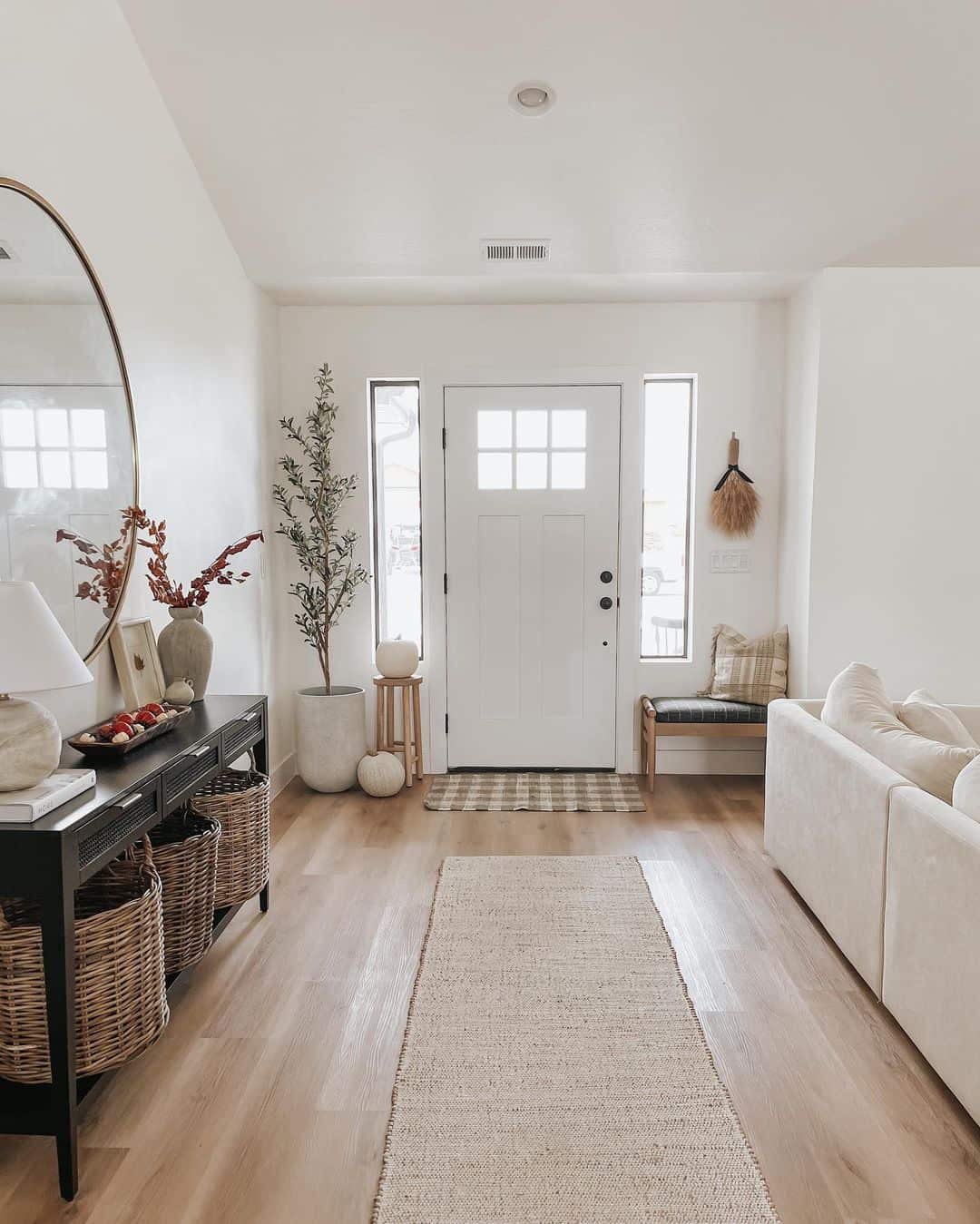
- Color Palette: A cohesive color palette helps unify the different zones. Consider using a neutral base for the walls and incorporating pops of color in furniture, accessories, and artwork.
- Lighting: Layered lighting creates depth and ambiance. Use overhead lighting for general illumination, task lighting for work areas, and accent lighting to highlight specific features.
- Texture: Mix and match textures to add visual interest and warmth. Combine smooth surfaces with textured fabrics and natural materials like wood and stone.
- Scale and Proportion: Consider the size and shape of each element to create a balanced and harmonious look. Avoid overwhelming the space with too much furniture or decorative items.
Conclusion:
:max_bytes(150000):strip_icc()/living-dining-room-combo-4796589-hero-97c6c92c3d6f4ec8a6da13c6caa90da3.jpg)
The entryway-living-kitchen combo presents a unique design challenge, but it also opens up a world of possibilities for creating a stylish and functional tiny home. By carefully planning each zone, maximizing space, and incorporating design elements that promote a sense of openness, you can transform this compact area into a haven that embraces both practicality and aesthetics.

Remember, small spaces don't have to feel cramped. With the right approach, you can create a tiny home, big style living experience.
Small Space, Big Style: Living, Dining, & Kitchen in One!
In the world of interior design, space is often a luxury. But what happens when you find yourself living in a space where the living room, dining room, and kitchen are all crammed into one? It can feel overwhelming, leaving you feeling like you're constantly tripping over furniture or battling for counter space. But fear not, dear reader, because with a little creativity and a lot of smart design choices, you can transform your combined living, dining, and kitchen space into a functional and stylish haven.
This article is your guide to conquering the multi-functional space challenge. We'll delve into the key considerations, explore design tips, and showcase inspiring examples of how to create a cohesive and inviting entryway, living room, kitchen combo that works for your lifestyle and aesthetic.
Defining Your Vision
Before diving into the specifics of layout, furniture, and décor, it's essential to define your overall vision. What is your style? What kind of atmosphere do you want to create? Think about:
- Your lifestyle: Are you a minimalist who values clean lines and open spaces? Do you love to entertain and need a spacious dining area? Do you enjoy cooking and need a well-equipped kitchen?
- Your aesthetic preferences: Are you drawn to modern, rustic, bohemian, or traditional styles?
- Your color palette: Will you embrace bold hues or prefer a neutral backdrop?
:max_bytes(150000):strip_icc()/living-dining-room-combo-4796589-hero-97c6c92c3d6f4ec8a6da13c6caa90da3.jpg)
Once you have a clear vision, you'll be able to make decisions that truly reflect your personality and needs.
Zoning Your Space
The most crucial element of designing a combined living, dining, and kitchen space is creating distinct zones. This approach helps to visually separate the different functions of the room while maintaining a sense of flow and unity. Here's how to effectively zone your space:

- Furniture Placement: Use furniture placement to create distinct zones. A sofa and coffee table clearly define the living area, while a dining table and chairs create a dedicated dining space. Consider a kitchen island or peninsula as a natural divider between the kitchen and living areas.
- Area Rugs: Area rugs are a fantastic way to visually separate zones. Choose different shapes, colors, and textures to create distinct areas within the room.
- Lighting: Strategic lighting can also help define zones. Overhead lighting illuminates the entire space, while task lighting over the dining table and work areas provides focused light.
- Color: Use color to visually separate zones. For example, paint the living area wall a slightly darker shade than the kitchen or dining area.
Maximizing Space and Functionality
In a combined space, every inch counts! Here are some clever strategies for maximizing space and functionality:

- Multi-functional Furniture: Look for furniture that serves multiple purposes. A sofa bed can double as a guest bed, a coffee table with storage can hold your essentials, and a dining table with built-in benches maximizes seating space.
- Wall-Mounted Storage: Maximize vertical space by incorporating shelves, cabinets, and wall organizers to store books, dishes, and other essentials.
- Mirrors: Mirrors strategically placed can make your space feel larger by reflecting light and creating the illusion of more depth.
- Open Shelving: Open shelving is a visually appealing and practical solution for storing dishes, glassware, and cookbooks. It also adds a sense of airiness to the space.
- Consider Built-Ins: If you have the budget, consider adding built-in cabinetry or shelving to maximize storage and create a cohesive, custom look.
The Kitchen: A Culinary Centerpiece
The kitchen is the heart of your combined space, so it's crucial to make it both functional and stylish. Here are some key considerations:

- Kitchen Island or Peninsula: A kitchen island or peninsula is a fantastic addition to any entryway, living room, kitchen combo. It provides extra counter space, storage, and seating, effectively separating the kitchen from the living area.
- Open Shelving vs. Cabinets: Consider the advantages and disadvantages of open shelving vs. closed cabinetry. Open shelving offers easy access to frequently used items and adds visual interest, but it also requires more maintenance and may not be suitable for storing delicate items.
- Appliance Choice: Choose appliances that fit the size and layout of your space. Consider a compact refrigerator, a sleek microwave, or a multi-functional oven.
- Backsplash and Countertop: Choose a backsplash and countertop material that complements your style and is easy to clean.
The Living Room: Your Oasis
The living room is your space to relax and unwind. Here are some tips for creating a comfortable and inviting living area:

- Furniture Placement: Arrange your furniture in a way that allows for comfortable conversation, reading, or watching TV. Consider using a sofa and armchairs for a classic living room arrangement, or a loveseat and two chairs for a smaller space.
- Lighting: Use a combination of overhead lighting and accent lighting to create a warm and inviting atmosphere. Consider a statement chandelier or pendant light over the living area, and floor lamps or table lamps to create soft pools of light.
- Color Palette: Choose a color palette that promotes relaxation and tranquility. Neutral tones such as beige, gray, and white create a serene backdrop, while pops of color can add interest and personality.
The Dining Area: A Gatherings Hub
The dining area is where you share meals and create memories. Here's how to make it a special part of your combined space:

- Table Size and Shape: Choose a table that fits the size and shape of your space. A round table can be a good choice for smaller spaces, while a rectangular table can accommodate a larger gathering.
- Chairs: Select chairs that are comfortable, stylish, and complement the overall style of the space. Consider incorporating accent chairs with unique details to add personality.
- Lighting: Use overhead lighting to illuminate the dining table and pendant lights or chandeliers to create a focal point.
- Décor: Elevate your dining area with decorative elements such as a centerpiece, artwork, or a rug.
Design Inspiration: Embracing Different Styles
To illustrate the versatility of entryway, living room, kitchen combo design, let's explore three distinct styles:

1. Modern Minimalism: Clean Lines and Open Spaces
- Color Palette: White, gray, black, and pops of color (like a vibrant rug or artwork)
- Furniture: Sleek and minimalist, with clean lines and neutral colors.
- Lighting: Simple and functional, with pendant lights, recessed lighting, or track lighting.
- Materials: Glass, metal, and wood, with an emphasis on natural textures.
- Decor: Minimalist and statement-making, with a focus on quality over quantity.
2. Rustic Charm: Warmth and Natural Textures

- Color Palette: Warm neutrals, browns, tans, and earthy greens.
- Furniture: Reclaimed wood, leather, and natural fibers.
- Lighting: Warm-toned lighting with Edison bulbs, farmhouse chandeliers, or lanterns.
- Materials: Wood, metal, stone, and exposed brick.
- Decor: Vintage finds, rustic accents, and natural elements.
3. Bohemian Eclectic: A Playful Blend of Styles
- Color Palette: Rich, saturated colors, jewel tones, and vibrant accents.
- Furniture: A mix of vintage, ethnic, and contemporary pieces.
- Lighting: Statement chandeliers, Moroccan lanterns, or string lights.
- Materials: Natural fibers, textiles, metal, and wood.
- Decor: Global textiles, plants, artwork, and personal treasures.

The Art of Balancing Form and Function
When designing a combined living, dining, and kitchen space, it's all about balancing form and function. Remember, your space should be both beautiful and practical. Here are some final thoughts:
- Prioritize Flow: Create a sense of flow by using furniture and décor to guide the eye throughout the space.
- Minimize Clutter: Keep your surfaces clean and organized to maintain a sense of spaciousness.
- Reflect Your Style: Don't be afraid to express your personality through color, patterns, and décor.
- Don't Be Afraid to Experiment: Have fun with the design process and don't be afraid to try different ideas until you find what works best for you.

By embracing these principles and implementing smart design solutions, you can transform your entryway, living room, kitchen combo into a stylish and functional space that you'll love to live in. .

